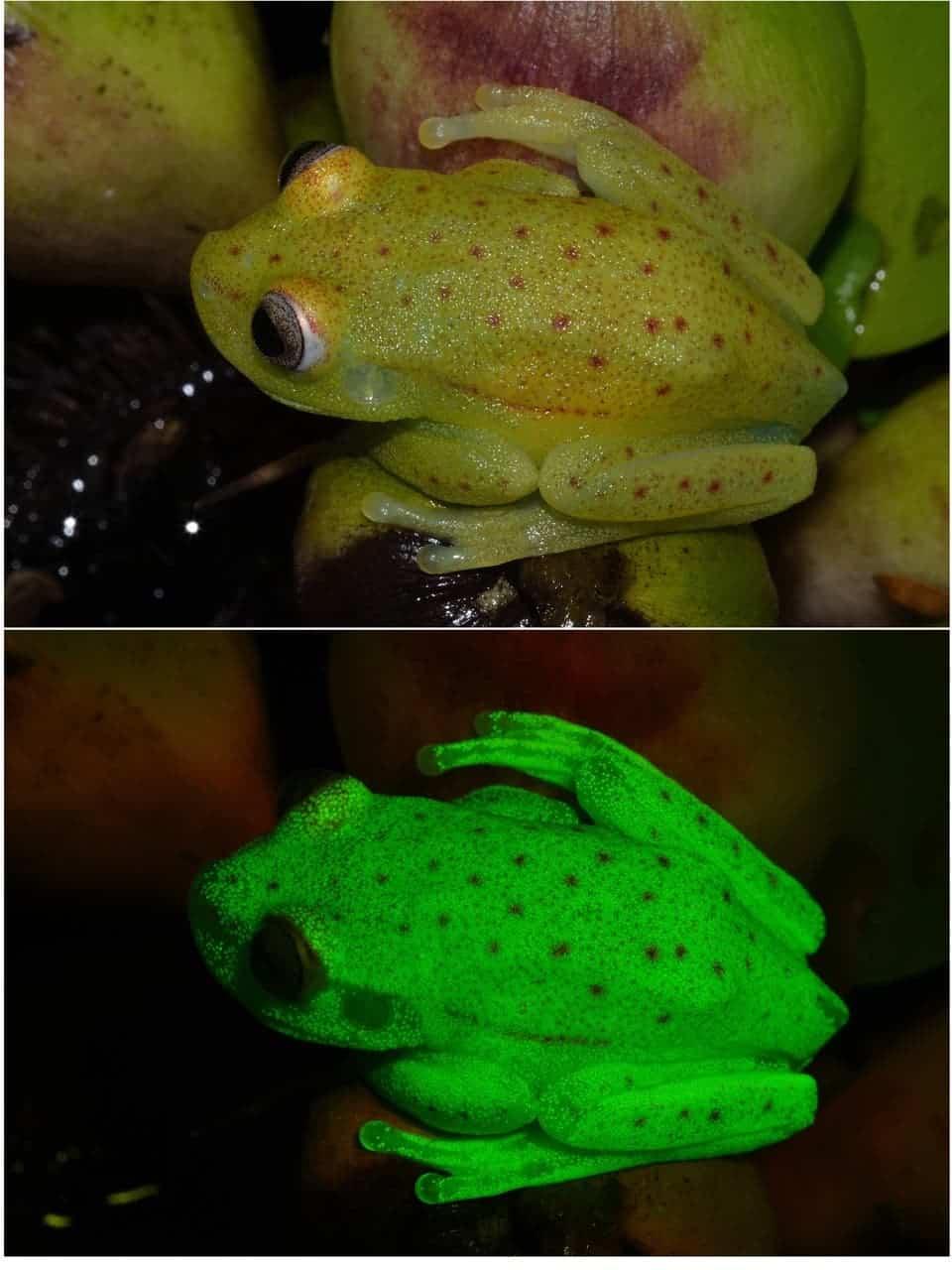Sometimes, interesting discoveries occur by accident. At the Bernardino Rivadavia Natural Sciences Museum in Buenos Aires, scientists were examining the pigments of a common tree frog. The polka dot tree frog (Hypsiboas punctatus) isn’t very bright; its skin is a muted yellow-green colour and it has reddish spots. However, after examining its skin under UV light, they found that it, in fact, has fluorescent skin! It glowed a very bright blue and green. The scientists were naturally quite shocked. This is the first time that fluorescence has been observed in amphibians. Although fluorescence is more common in aquatic animals (corals, sharks, fish, a sea turtle), it is very rare in land animals, being only found previously in scorpions and parrots.

How does it work?
Fluorescence first involves absorbing low wavelength light, to which frog photoreceptors aren’t very sensitive. Then the light is emitted at higher wavelengths; the photoreceptors are very sensitive to these wavelengths. Therefore, there needs to be light outside for an animal to glow like this. In this regard, fluorescence is different from bioluminescence. Bioluminescence does not require any light and is created through chemical reactions.
The fluorescent molecules that this tree frog uses are completely unique. No other fluorescent animal uses anything like them! Three molecules, called hyloin-L1, hyloin-L2 and hyloin-G1, located in the lymph and skin glands were found to cause this glow. The molecular structure of the molecules involves a ring and a chain of hydrocarbons. The most similar molecules to these are found in plants.
Why fluoresce?
The fluorescence contributes 18-29% to the light available in twilight and night, making the frogs brighter and, perhaps, helping them to see more. This fluorescence could be used to communicate, camouflage, or attract a mate, though its true purpose is not known yet.
This frog is probably not the only fluorescent one out there. One of the study’s authors, Dr. Julián Faivovich, thinks that it is likely that other frogs also have this property. The most promising candidates are the 250 other species of tree frogs that have translucent skin like the polka dot tree frog. He encourages other researchers studying tropical frogs to carry a UV flashlight with them.






